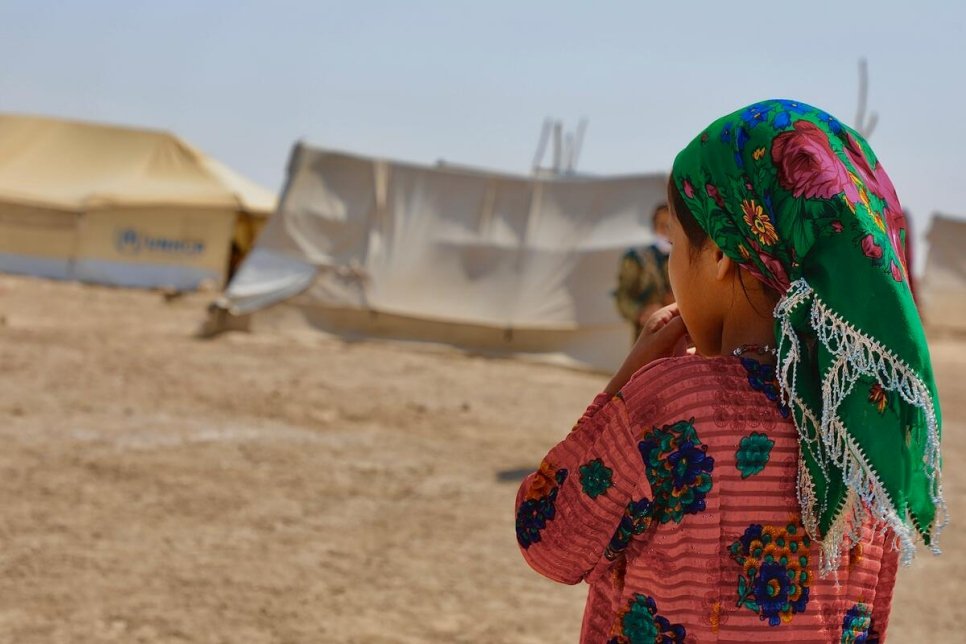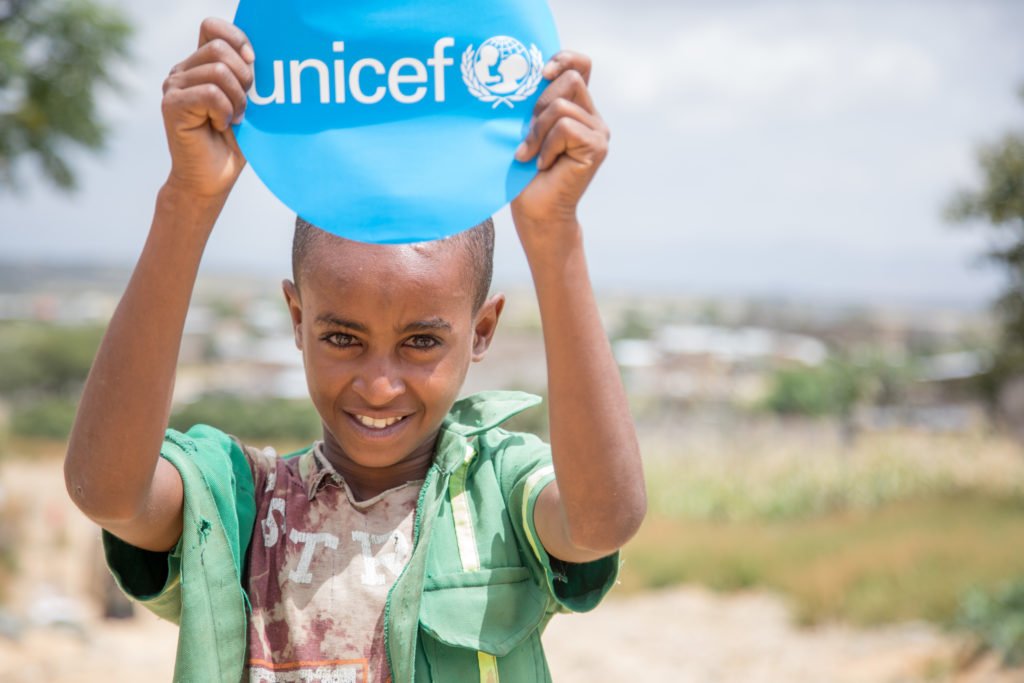For many people, the UN is the world’s ‘911 service’–a first-responder that helps deliver food, shelter, clean water, medical assistance, and education to those caught in the middle of deadly conflicts or suffering in the aftermath of natural disasters.
Given its high degree of international legitimacy, capacity, and reach, the UN is uniquely positioned to coordinate and lead these types of relief efforts.
In 2021, UN humanitarian agencies such as the World Food Programme (WFP), the UN Refugee Agency (UNHCR), the UN Children’s Fund (UNICEF), and the UN Population Fund (UNFPA), responded to the needs of millions of people suffering from food insecurity, persecution, economic hardship, displacement, and the compounding impacts of the COVID-19 pandemic. Through projects carried out by these and other agencies, as well as their NGO and private sector partners, 107 million vulnerable people were reached over the course of the year.
A changing climate, protracted conflicts, and the continued health and economic hardships imposed by COVID-19, however, means that 2022 will be another record-breaking year for people in need. The UN’s Office for the Coordination of Humanitarian Affairs estimates that 274 million people will require emergency aid and protection over the next 12 months—a 17 percent increase over 2021. This rise comes at a time when the international humanitarian system is facing severe resource demands and funding shortfalls. The UN and partner organizations aim to assist 183 million people across 63 countries in 2022, which will require $41 billion.
UKRAINE
Russia’s invasion of Ukraine has created the worst humanitarian crisis in Europe since World War II, killing thousands of people and forcing nearly 12 million Ukrainians from their homes, including 5.3 million who have left for neighboring countries. UN agencies are at the forefront of international efforts to respond to this complex and growing emergency. For example, within Ukraine, UNHCR is helping run over 70 reception centers across the country for internally displaced people, where individuals receive cash assistance to cover the costs of basic needs like accommodation, food, clothing, and hygiene items. The World Health Organization (WHO) has delivered nearly 100 metric tons of trauma and emergency medical supplies to Ukrainian hospitals and is working in neighboring countries to prevent, identify, and rapidly respond to outbreaks of vaccine-preventable diseases. UNFPA is using a network of shelters and crisis rooms to respond to the needs of women and girls who have been the victims of gender-based violence. WFP, meanwhile, is working to reach 6 million people in Ukraine with ready-to-eat rations, canned goods, bread, flour, cooking oil, and other types of food aid. WFP is also working to address the broader global food security challenges created by the invasion, which has disrupted Ukraine’s wheat exports and led to significant increases in the price of food and fuel in other humanitarian emergencies around the world. Beyond these activities, the UN has also been working with the International Committee of the Red Cross to negotiate safe passage for trapped civilians out of besieged areas, particularly the port city of Mariupol, which has been devastated by Russian bombardment.
AFGHANISTAN
The combined shocks of drought, conflict, COVID-19 and a vast economic crisis have put the country on the brink of becoming the world’s worst humanitarian crisis. The UN reports that more than 23 million Afghans will face emergency levels of acute food insecurity over the course of the 2021-2022 winter—the highest number of food insecure people ever recorded in Afghanistan during the ten years that the UN has conducted this analysis. Beyond the immediate impacts, Afghanistan’s rampant inflation, skyrocketing unemployment, and widespread hunger and malnutrition could spark mass displacement throughout the country and the larger region, as families will be increasingly forced to choose between migration and starvation.

As the international community struggles with how to meet the enormous humanitarian demands surging across the country, while denying the Taliban any legitimacy or direct funding, it is evident that the UN will be indispensable. Already, the UN has demonstrated that it is able to operate in Afghanistan in a way that ensures aid reaches the people that need it most. As a liquidity, inflation, and banking crisis gripped the country in late 2021, the UN Development Programme (UNDP) stepped in to take over a World Bank program and directly pay the salaries of 25,000 doctors, nurses, and other health care workers across 2,200 primary care clinics and small hospitals. This action helped prevent the country’s healthcare infrastructure from imploding, but it was only temporary. As a result, the UN has established a new special trust fund that seeks to continue this work, providing urgently required cash directly to public sector workers like teachers and other civil servants through the private banking system and bypassing Taliban authorities. UNDP estimates that the fund will need $667 million to cover 12 months of such activities. Without these investments, as well as larger humanitarian efforts by other parts of the UN system, the situation in the country would be much worse, with potentially dire consequences for the people of Afghanistan and the wider region.
SOUTHERN MADAGASCAR
WFP has warned that the humanitarian situation in southern Madagascar could become the first-ever famine caused by climate change. Five years of consecutive droughts, sandstorms, and vast deforestation have left families in the southwestern end of the country—known as Le Grand Sud, or the Deep South—unable to feed themselves. Described by the UN Humanitarian Coordinator for Madagascar as “the human face of the global climate crisis,” at least 1.3 million people, or nearly half of the Grand Sud’s population, need emergency food and nutrition assistance and half a million children under the age of 5 are at risk of severe malnutrition. This dire new reality has pushed the local community to pursue desperate survival measures such as eating locusts, grass, or leaves and forced children to leave school in order to help their families forage for food.
The UN and its partners significantly expanded their operations in Madagascar over the course of 2021, reaching more than 900,000 people with life-saving assistance. Moving forward, the UN is seeking $231 million to cover continued operations in Madagascar, which will provide food, water, health services and life-saving nutrition treatment to families in the Grand Sud through May 2022.
YEMEN
Almost seven years since the conflict began, Yemen remains one of the worst humanitarian crises in the world, with 20.7 million people—70 percent of the total population—in need of humanitarian assistance. In 2021, the situation in Yemen was further exacerbated by COVID-19, heavy rains and flooding, inflation, and escalating hostilities which have left nearly 4 million people internally displaced. Women and girls are especially vulnerable, bearing the biggest burden of the violence and instability that has gripped the country. The rial, Yemen’s currency, has been pummeled by the crisis and reached an all-time low against the U.S. Dollar in December 2021, jeopardizing the country’s ability to import staples and making it impossible for ordinary people to afford basic necessities.
Even without these complications, the operating environment for humanitarians in Yemen was already extremely challenging, with the UN caught between warring parties and competing governance structures that create complex barriers for delivering life-saving services. Despite such a dangerous and highly restrictive operating environment, the UN has mounted a robust response in Yemen. In 2021, WFP scaled up its operations to reach 13 million people with emergency food and nutrition assistance and the WFP-managed UN Humanitarian Air Service ensured aid workers were able to reach the country’s most in need areas. With one of the highest maternal mortality rates in the Arab States region, UNFPA has been working to improve the availability and quality of reproductive health services in Yemen. During the first half of 2021, UNFPA reached more than 1.2 million people with life-saving reproductive health and protection services and emergency relief, targeting support to women and girls through 118 health facilities and assisting with 344,000 safe births. UNHCR distributed more than $62 million in cash assistance to over 175,000 displaced families, helping ensure vulnerable populations were able to purchase food and access shelter.
ETHIOPIA
Just one year since fighting broke out between the Tigray People’s Liberation Front (TPLF) and Ethiopian National Defense Forces, the humanitarian situation in northern Ethiopia has become dire, with conditions continuing to deteriorate and the UN’s ability to properly respond increasingly restricted, primarily by government forces. As of early 2022, the conflict has left 7 million people suffering acute food insecurity, the victims of a cascade of conflict that has resulted in widespread displacement and staggering reports of human rights abuses.
Since the start of the fighting, the UN and its partners have faced varying degrees of access challenges into and within Tigray. In late September 2021, the Ethiopian government expelled seven UN officials from the country, many of whom were responsible for coordinating or overseeing the UN’s humanitarian response. In November 2021, 16 local UN staff and their dependents were arrested, along with 72 drivers contracted by WFP. This has deeply affected operations on the ground. For instance, only 1,317 trucks of humanitarian supplies were permitted to enter Mekelle, the capital of Tigray, during the second half of 2021—just 13 percent of the supplies required to meet humanitarian needs in the region. Restrictions such as these underscore the severity to which the conflict has become politicized, with the Ethiopian government depicting the UN and other neutral aid groups as carrying out activities that favor the TPLF.

In the face of these enormous challenges and dangerous conditions, the UN continues to deliver. In November 2021, the UN allocated $40 million to support life-saving aid and civilian protection efforts in the northern regions of Ethiopia, and WFP continues to deliver nutritious food to hundreds of thousands of children and support refugees with in-kind food assistance and cash-based transfers. In 2022, the UN will focus its response priorities to support at-risk and vulnerable people, particularly women, children, elderly persons, and people with disabilities. UNICEF plans to treat over 600,000 children for acute malnutrition and vaccinate 3 million children against measles. Without these and other critical interventions, the humanitarian situation in Ethiopia has the potential to irreversibly impact a decade of development gains.